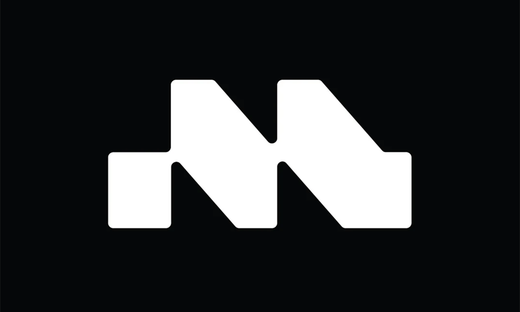Aligning IT Infrastructure with Business KPIs

Many business owners struggle to connect their IT systems with their company goals. They invest resources in technology but fail to recognize its impact on profits, efficiency, and customer satisfaction. This disconnect wastes money and slows growth.
Here’s the good news: Aligning IT infrastructure with key business metrics can improve everything. Studies show that businesses with aligned IT strategies outperform their competitors in terms of productivity and decision-making.
This blog will guide you through practical steps to bring your IT operations in line with measurable objectives. By the end, you'll know how to make better decisions, track performance clearly, and achieve optimal results. Keep reading for straightforward ways to tackle a complex issue!
Key Takeaways
- Aligning IT with KPIs improves efficiency, decision-making, and customer satisfaction. Businesses with aligned strategies often outperform competitors in productivity.
- Defining measurable goals like system uptime or reduced costs ensures clarity. Numbers make tracking easier and promote accountability across teams.
- Tools such as business intelligence software help analyze data to meet objectives like profitability or customer satisfaction scores.
- Flexible methodologies allow quick adjustments to align IT actions with shifting priorities, reducing risks, and improving performance metrics.
- Regularly monitor ROI, downtime expenses, and key performance indicators to measure how well IT supports business goals.
The Importance of Aligning IT Infrastructure with Business KPIs
A well-aligned IT infrastructure serves as the backbone of any modern business. It keeps operations efficient, supports growth, and ensures resources are directed where they are needed most. Without connecting IT systems to key performance indicators (KPIs), you risk wasting money on tools that don’t support your goals. Poor alignment creates inefficiencies, delays decision-making, and undermines customer satisfaction.
"Technology should serve as a mirror reflecting business priorities." Aligning IT strategies with KPIs also enhances data analytics efforts. This allows companies to track efficiency measures in real time and adjust quickly if targets aren’t met. For example, monitoring operational efficiency can reveal bottlenecks in production or service delivery early enough for corrective actions. Effective alignment helps turn raw data into meaningful insights for ongoing improvement across the board.
Key Steps to Achieve Alignment
Setting a clear path between IT actions and business goals bridges the gap. Without alignment, it's like rowing against the tide—effort wasted.
Define measurable business KPIs
Identify specific goals that directly impact your organization's success. Break these down into measurable targets, like percentage increases in customer satisfaction or reducing operational costs by a set amount. Numbers make tracking progress easier and foster accountability among teams.
Focus on KPIs that align with your key business objectives. For example, if you aim for better efficiency, track metrics such as system uptime or response times for IT support tickets. Avoid vague indicators; concrete data drives clarity and smarter decisions over time.
Align IT strategy with organizational goals
Adjust your IT strategy to align with business goals. Emphasize connecting operational needs with technological capabilities. For example, a retail company seeking to improve customer satisfaction might focus on real-time monitoring tools to resolve problems more quickly. Strive for strategies that lead to clear, measurable outcomes.
"Technology should be integral, forming the foundation of your business objectives." Set priorities based on performance indicators essential for growth. Align technology investments with areas that improve efficiency or lower costs. Leading Charleston IT companies often specialize in building adaptable systems that meet evolving business metrics while staying cost-effective.
Establish clear communication channels
Clear communication links the IT strategy to business goals like a bridge. Teams must convey ideas clearly, especially when integrating IT infrastructure with performance indicators or key objectives. Regular meetings help prevent errors. Use tools that make updates simpler and promote openness. Many businesses trust Nortec to streamline IT support communications, ensuring that departments stay informed and responsive to KPI-driven priorities.
Eliminate barriers for easier collaboration between departments. For example, create shared dashboards to monitor operational efficiency or customer satisfaction as it happens. Open discussions reduce misunderstandings and build trust while ensuring everyone remains aligned on strategic efforts.
Leveraging Technology as a Business Enabler
Smart tools and adaptable methods can quickly turn IT from a back-office function into a genuine driver of business outcomes—learn more about how this change occurs.
Implementing data-driven decision-making tools
Data-driven tools analyze raw information to identify valuable trends. They help businesses predict customer behavior using real-time monitoring and analytics. IT teams can then adjust operations to improve performance metrics aligned with business objectives. These tools also reduce guesswork, guiding decisions that enhance cost reduction and efficiency.
For example, adopting business intelligence software highlights which services bring higher ROI or where resources fall short. Organizations use these insights to directly address gaps in alignment with key KPIs like customer satisfaction or profitability. Aligning IT strategy with organizational goals drives measurable success in the long run.
Next, consider flexible methodologies for greater adaptability within your IT infrastructure strategy.
Adopting agile methodologies for adaptability
Agile methodologies help businesses respond quickly to changes. Teams break projects into smaller tasks and adapt as priorities shift. This approach enhances IT operations and keeps them aligned with business objectives.
Short development cycles let you test solutions and adjust fast. Flexibility like this reduces risks and improves performance measurements. It promotes teamwork while fostering transparency among departments, keeping everyone on the same page.
Measuring the Impact of IT Alignment
Analyze how IT choices enhance profits, reduce expenses, and refine focus on goals to see if you're truly achieving the objectives.
Tracking ROI and operational efficiency
Tracking ROI (Return on Investment) and operational efficiency is essential for understanding how IT investments support business KPIs. Numbers don't lie, but interpreting them requires structure. Below is a breakdown to guide business owners:
|
Metrics |
Why It Matters |
How to Measure |
|
IT Spend vs. Revenue Growth |
Shows if technology investments are worth the price tag. |
Compare annual IT expenses against revenue increases. Calculate as a ratio. |
|
Downtime Costs |
Highlights the financial impact of system failures or delays. |
Sum up the revenue lost per hour of downtime. Include labor costs. |
|
Service Request Completion Time |
Signifies efficiency within IT teams. |
Track the average time it takes to resolve support tickets. |
|
Resource Usage Rates |
Identifies how many IT resources are in use. |
Measure active workloads against total available capacity. |
|
Employee Productivity |
Reflects how IT tools impact staff output. |
Monitor task completion rates before and after tool adoption. |
|
Customer Satisfaction Scores |
Reveals how IT systems support customer-facing functions. |
Analyze feedback forms, NPS (Net Promoter Score), or surveys. |
Data should guide decisions. If downtime spikes, investigate system inefficiencies. If IT spend rises but revenue doesn't, recheck priorities. ROI tells a story, but actions determine its outcome.
Monitoring performance against KPIs
Regularly reviewing performance measures keeps business goals on track. IT operations can use live monitoring tools to check progress against key performance indicators. For example, tracking system uptime or application response times ensures infrastructure reliability aligns with efficiency measures. These checks help identify issues before they grow into costly problems.
Data analysis provides deeper insights by pinpointing bottlenecks and areas for improvement. Measuring customer satisfaction, operational costs, or productivity levels provides clarity across departments. Timely adjustments make it easier to refine processes and meet business objectives without interruption.
Conclusion
Aligning IT infrastructure with business KPIs is not just a nice-to-have; it’s a necessity. Clear goals and smart strategies keep technology working for your success. Small adjustments today can drive big wins tomorrow. Stay focused, track progress, and let performance metrics guide you. After all, alignment isn’t the finish line; it’s an ongoing journey to improvement!















